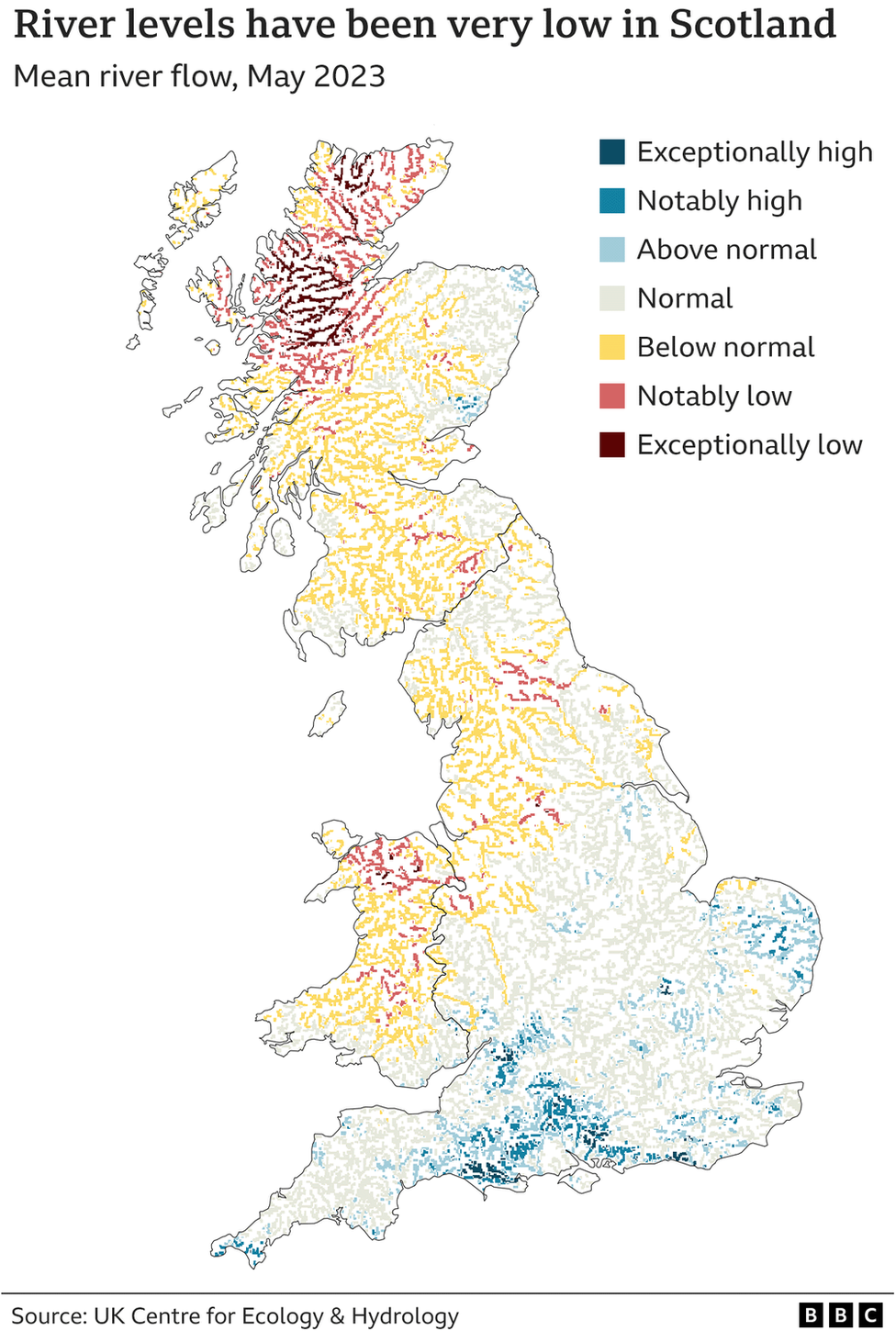Warning Scotland faces threat of water shortages
- Published

Sepa warns a large part of Scotland could reach its highest water scarcity warning level by the end of June
The Scottish Environment Protection Agency (Sepa) warns Scotland is facing a growing threat of water shortages.
It said every part of the country had now reached some level of scarcity.
But Sepa has forecast 28 of 83 areas of Scotland could be at significant scarcity - its highest level of risk - by 30 June.
The Loch Maree area of the Highlands is already at that level, while the whole of south-west Scotland has been placed on Sepa's second highest warning level.
Parts of central Scotland, the Inner Hebrides and Ness area of the Highlands are also at that same moderate scarcity level.
The warnings have come amid a heatwave, with hot, dry weather being experienced widely across Scotland.
On Thursday, Highland Council warned some household private water supplies in its area had dried up.
Sepa said the weather conditions could last until early July and followed a drier than usual winter and spring. In May, Scotland only received 44% of its long-term average rainfall.
It has appealed to businesses to make careful use of any water they draw from rivers or lochs.

The off-grid community conserving its water

The Scoraig peninsula in the north-west Highland coast is home to about 70 people, long-used to generating their own power from renewable schemes - and using natural springs for water.
Cathy Dagg, a crofter and archaeologist who has lived there for 43 years, said conserving water was never far from their minds. The water springs are dependent on rainfall.
"I think I became aware of winters becoming much drier more than 20 years ago," she said.
"When I first came here my memory is of lashing rain and storms.
"Drier springs have crept up on us, and we don't have the snow in April we used to. Then about five years ago we have had it suddenly get dry around the time we are putting plants in the ground.
"It has been bone dry."
Ms Dagg's efforts to conserve water include minimising flushing the toilet, and reusing water for washing vegetables for watering plants.
"I'll cool off in the sea rather than take a cold shower," she said.
Ms Dagg added: "Two-thirds or more of our water goes to our sheep at the moment.
"Their grazing is poor and not as it should be, with brown patches where the ground is shallow because of rocks near the surface."
She said work already started by some residents on peatland restoration would likely continue in an effort to help retain more rainfall for the springs.

Hydro-electric schemes, distilleries, agriculture and golf courses are among the types of businesses that abstract water.
Sepa said it seen many examples of good practice and innovation, but added the severity of the situation meant it had to consider suspending abstraction licences in the coming week in the worst affected areas, including Dumfriesshire and other parts of the south-west.
Guidance has been issued on which businesses may be excluded from restrictions, or have the volume of water they can take reduced rather than stopped.
The measures follow a meeting last week of the Scottish government's resilience room, convened by First Minister Humza Yousaf, to discuss water scarcity.


Sepa's head of water and planning, Nathan Critchlow-Watton, said: "Scotland's climate is changing, and we urgently need to adapt.
"Severe water scarcity has significant impacts on our environment, our economy and society. Our rivers and lochs are under immense stress and it's clear further action will be needed to protect them."
He added: "Last year, we warned a decrease in summer rainfall may exert pressure on areas that have not experienced water scarcity before, and that's now happening.
"It is vitally important that Scotland is prepared to deal with water scarcity both now and in the future and people work together to plan for and manage water scarcity events."
Scottish Water has urged its customers across Scotland to use water as efficiently as possible in homes and gardens to help conserve supplies.
Related topics
- Published15 June 2023

- Published10 June 2023

- Published2 June 2023

- Published26 May 2023
